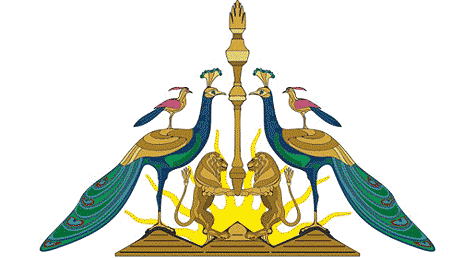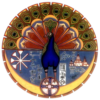
Yezidis in a New World Order
by Nancy Jamal
History and Faith
Commonly regarded as Kurds, Yezidis form a religious and ethnic minority with unique values and practices often misunderstood by their neighbors, which has lead to their persecution for being devil worshippers.
The complex, secret beliefs of Yezidis, their legends and their social structures, including their caste system, has set them apart from other religions in the region.
For centuries, Yezidis were believed to be heretical Muslims Kharijites. Some say they descended from Yezid bin Muawiyah (647h-683h) of the early Umayyad dynasty, at the heart of the distinction between Sunni and Shia Muslims. However, according to Yezidis, the Caliph Yezid was a Muslim ruler who eventually became disenchanted with his religion and converted to Yezidism.
They maintain that their name comes from the word Yezdan or Eyzid, meaning “God“, and Yazadeh, meaning “divine” or “angelic”, hence making them “worshippers of God”.
The Yezidi holy books are Kitab Al-Jilwa (Book of Revelation), written by Sheikh Adi, and the Mishefe Res (Black Book), which is believed by scholars to have been written in the 11th and 12th centuries. But many scholars now believe the manuscripts published a century ago were forgeries by non-Yezidis. The core religious texts can be found today in hymns and sayings, transmitted orally and laden with cryptic allusions difficult for outsiders to interpret.
Akin to most faiths, Yezidism has absorbed the predominant nearby religions and includes aspects of Sufi Islam, Judaism and Christianity.
The Yezidis explain that their syncretic religion has rich verbal heritage that mixes Islamic mysticism with the dualism of Zoroastrianism being the ancient religion of Persia, as well as elements of early, pre-Islamic religions, including Mithraism, a mysterious religion originating in the eastern Mediterranean that contains some Christian practices.

They prefer to name themselves as Dawaaseen, which is taken from the name of an old Nestorian diocese known as the Ancient Church of the East. Many of their beliefs are derived from Christianity. They revere both the Bible and the Quran (with a spin), yet much of their own scripts are unwritten. From the Quran, for instance, any word relating to Satan or Hell is ignored.
The origins of the religion are found in the complex, syncretic teachings of their founder, Sheikh Adi bin Muthafar Al-Amawi, a Sufi mystic who claimed descent from the Umayyad dynasty and who was proclaimed an incarnation of “Malak Tawous”, the principal figure in Yezidi cosmology. Sheikh Adi settled in the valley of Lalish, north east of Mosul. Today, his tomb has become the focus of the annual September pilgrimage.

Yezidis are monotheists who believe God created the universe and rules the world through seven holy beings or angels formed from his divine light. The leader of these angels, Malak Tawous (the “Peacock Angel”) embodies humanity’s potential for good and evil, light and dark. They believe Malak Tawous is the only angel who refused to bow to Adam and because of that he fell from God’s favor. Yet when he saw the suffering and pain of the world, his tears of remorse put out the fires of hell. Recognizing his stubbornness as a sign of devotion, God then elevated Malak Tawous to head the angels and to serve as the intermediary between God and mankind.
Furthermore, the Yezidi story regarding Malak Tawous’ ascension to God’s favor is almost identical to the story of the Spirit Ebliss in Islam, except that Yezidis revere Malak Tawous for refusing to submit to God’s orders, whilst Muslims believe that Ebliss’s refusal to submit caused him to fall out of Grace with God, and to later become Satan himself. Yezidis are forbidden to use the name Satan, and hold that the source of evil is in human hearts.
Although, Yezidis never declare their prayers to outsiders, like Muslims, they pray five times a day yet it is to Malak Tawous not Allah and when they pray, they turn towards the sun, and at noon they pray facing Lalish and the tomb of Sheikh Adi.
Similar to Islam, circumcision is often practiced. They are allowed to marry up to six women all at once, two more than the number accepted in Islam.
Food laws are common in many religions but it is interesting to note the parallels with the Jewish and Muslim customs. In terms of rituals, Yezidis do not eat pork nor wear pigskin. They must not eat lettuce, cabbage, okra, pumpkins, or gazelle meat among other foods. They cannot mix elements that are viewed opposing to each other, just as Judaism does allow mixing meat with dairy.
Yezidis claim that their religion predates Judaism, Christianity, and Islam. Noticeably, the Yezidis and Christians of the region have a close bond: In the nineteenth and early twentieth centuries, when the Ottoman Empire persecuted the Armenian Christian minority, Yezidis undertook to aid the Armenians as well as other Christians. In more recent years, Iraqi Christians also looked to Yezidis for help when they felt threatened by different Iraqi interest groups. These close associations with different types of Christians in a predominantly Muslim area would seem to indicate some connection between Yezidi faith and Christianity.

The peacock in early Christianity was a symbol of immortality, because its flesh does not decay. Malak Tawous is considered God’s alter ego, inseparable from his divine self, and to that extent Yezidism is considered monotheistic.
Similar to Christianity, children are baptized at birth by a priest and a form of Communion with blessed bread is shared at weddings.
Yezidis believe they are descended from Adam alone through his son Shahid bin Jar, born from a woman other than Eve. Every Yezidi is born into either a priestly or lay family and inter-marriage between the castes is prohibited. Also, outsiders cannot convert to Yezidism; one must be born into it.
The number 21 holds great importance in the ancient religious practice of Yezidism. It is related to the yellow sun with its 21 rays.
Wednesday is the holy day, Saturday is the day of rest, there is a three-day fast in December that denotes the birth date of Yezid bin Muawiyah, and the Yezidi new year falls in spring (similar to Zoroastrian’s Nawrooz). The great festival is the seven-day Feast of the Assembly in September in Lalish, with pilgrimages to the shrine of Sheikh Adi with the annual sacrifice of an ox to mark autumn. The religion also has certain taboos surrounding the four revered elements of earth, air, fire and water.
Population & Global Communities
Estimating their current numbers is difficult, with figures ranging from 70,000 to 500,000. They have traditionally held themselves apart in small communities mainly scattered across northwest Iraq, northwest Syria and southeast Turkey, Iran and Armenia.
Many Yezidis immigrated to Ireland in the 17th century, where their skills as carpet weavers were much in demand, and settled in the Cork Street area of Dublin. They built their own mosque but it was demolished during the road-widening scheme in the 1970s. At that stage practically all of them had intermarried with the native Irish and the mosque became redundant as a result. It can still be seen on the ordinance survey maps of the early 19th century.
Most Georgian and Armenian Yezidis have now relocated to Russia, which last recorded a population of 31,273 Yezidis in the 2002 census. The demographic profile has probably changed considerably since the beginning of the 2003 Iraq War and even more so with the creation of ISIS’ territory.
Yezidi communities have faced several mass emigrations which have resulted in the establishment of large Diaspora based communities abroad. The most significant of these is in Germany, which now has a Yezidi community of over 40,000. Since 2008 Sweden has seen sizable growth in its Yezidi emigrant community, which had grown to around 4,000 by 2010 and a smaller community exists in the Netherlands. Other groups live in Belgium, Denmark, France, Switzerland, the United Kingdom, the United States, Canada, and Australia. Together, these communities have a net population of probably less than 5,000.
